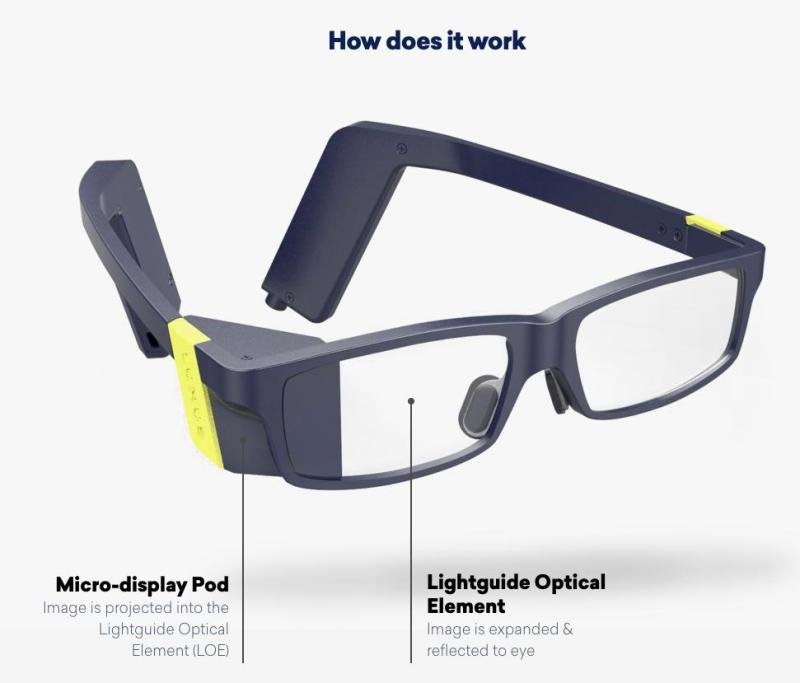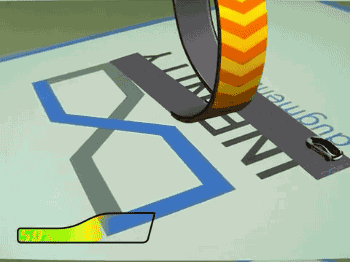Unconsciously, Alibaba has already been the most active person to embrace VR/AR in BAT.

Looking back one year from January 2017, Alibaba has not only successively invested in several AR projects, but also step by step to promote the launch of Buy+ (bold and italic are investment projects):
In February 2016, Alibaba led Magic Leap's $749 million Series C round of financing
In March 2016, Alibaba launched the Buy+ plan to create the world’s largest 3D product library
In July 2016, Alibaba showcased the HTC Vive-based Buy+ Demo at Taobao Festival
In November 2016, Alibaba invested $15 million in Israel's AR engine and solution company Infinity AR
In November 2016, the mobile phone Taobao was on the Buy+ page, and consumers could use it on their mobile phones.
In January 2017, Alibaba participated in a round of Lumus C rounds at Israel’s AR head lens manufacturer for US$6 million.
In January 2017, Alibaba Group’s Alibaba Capital invested more than US$10 million in Swiss vehicle-mounted AR navigation technology company WayRay (Very)
Alibaba’s largest and most well-known investment in VR/AR is the $7.44 billion round C of Magic Leap in February 2016.
One year later, Magic Leap still failed to come up with a product that could be mass-produced. It was also caught in the turmoil of over-marketing and executive disputes. Whether this investment by Alibaba is worth it has yet to be observed.
Compared with the billion-dollar capital invested in Magic Leap, Alibaba’s investment in Lumus, Infinity AR and WayRay is negligibly small. However, if you carefully study these projects, you will find that the first two are actually very cost-effective.
Let's look at the establishment time first. Lumus was founded in 2000 and Infinity AR was founded in 2006. The youngest WayRay was founded in 2012. This at least shows that these companies are not chasers of the VR/AR boom in these two years, and Infinity AR even passed the market in 2009.

Look at technical strength and business. Lumus' core competency lies in its self-developed Light-guide Optical Element. This technology allows the image to be projected on a transparent lens, resulting in an overlay display.
The AR glasses lenses made with waveguide optics are small and thin, close to normal glasses. Therefore, this technology has become one of the main display technologies of current AR glasses. The more well-known AR products are HoloLens.
Lumus's waveguide optics technology can be said to represent the highest level in the world, and the AR components that began manufacturing the pilot helmet for the US Air Force in 2010 are the best proof. The AR glasses presented by Lumus at the 2017 CES show that they have extended the field of view achieved by waveguide optics technology to 55°, while the devices currently using waveguide optics generally have a viewing angle of only 30°.

Lumus is favored by domestic capital. Prior to Alibaba, Quanda Investment Group, domestic optical giant Crystal Optoelectronics, HTC, and Taiwan’s electronics manufacturer Quanta Computer all invested in Lumus.
Among the AR equipment manufacturers that have collaborated with Lumus, exactly one is Alibaba's Infinity AR. In April 2016, Lumus released the AR glasses DK-50 in conjunction with Infinity AR. The glasses use the former waveguide optical display technology and the latter's SW engine.

DK-50
The SW engine is a good example of a low-cost AR solution. With a 2D dual camera and IMU (Inertial Measurement Unit), the SW engine can reconstruct the 3D environment, and the projected augmented reality image can simulate effects such as low light, reflection, transparency, and shadow, and it can continuously analyze the direction and position of the user's change. .
Because there is no need for a depth camera, hardware costs are reduced a lot. At the same time, passive cameras and computer vision algorithms are used to reduce processing power and save battery life. Infinity AR claims that this engine can be used on any mobile device, including mobile phones, tablets, and wearable glasses.
In short, Infinity AR hopes to achieve the same effect as HoloLens with two 2D cameras and an IMU. Infinity AR exposes several Demo videos on YouTube. Below is a screenshot of one of the videos. It can be seen that the car ran out of the table after flying off the runway, and then a parabola dropped. This means that augmented reality images can sense real objects. For low-cost solutions, this AR effect has reached the grid line.

In January 2017, Infinity AR said in an interview with the media that it will set up a Chinese office during the year to enter the domestic market. At present, Infinity AR's official website in China is already online.
The fourth AR technology company Alibaba invested in was WayRay of Switzerland. The core product of WayRay is Navion, a car navigation device using AR technology. It can project navigation information, safety tips, etc. in the form of holographic images on the windshield without additional glasses or helmets. However, there are not many companies engaged in vehicle-mounted AR navigation products. The reason why Ali Capital chose WayRay remains to be seen.

Navion Navigation Demonstration
Overall, Alibaba's investment in the AR project focused on platform-level technology, whether it be Magic Leap's AR glasses, Infinity AR's SW engine, or Lumus's waveguide optics. The only exception is WayRay's onboard AR navigation device.
However, it is worth noting that after investing in Magic Leap, Alibaba’s investment in AR seems to be changing its strategy. It is more inclined to tap projects with higher completion levels that can be landed as quickly as possible, and the amount of investment is not large.
There is also a change in the way Buy+ is launched. In July 2016, Buy+ Demo debuted at Taobao Festival of Creativity, using a PC VR + 3D model, with a very narrow audience.
In November 2016, Buy+ officially launched on mobile Taobao, adopting the method of mobile VR (Cardboard) + panoramic video. Consumers do not need to purchase additional PC VR heads, nor do they need to use the next app other than Taobao Mobile to be able to feel what Buy+ is. Although the experience has dropped several levels, it is more grounded and more widely available.
Combining investment with Buy+ will reveal that Alibaba no longer regards VR/AR as a niche market but believes it can be adopted by consumers. In the specific course of action, Ali is similar to Google, preferring to use low-cost, low-threshold programs to educate the market while also laying out platform-level technologies to await real market prosperity.
High frequency board dielectric material has the following characteristics
1. It has the characteristics of small signal transmission loss, short transmission delay time and small signal transmission distortion.
2, has excellent dielectric properties (mainly DK, DF). Moreover, this dielectric property (DK, DF) maintains its stability under environmental changes in frequency, humidity, and temperature.
3. High-precision control with characteristic impedance (Zo).
4, has excellent heat resistance (Tg), processability and adaptability.
Rf Module Pcb,Tin High Frequency Circuit Board ,Rigid Flexible High Frequency Pcb,High Frequency Circuit Board
Chuangying Electronics Co.,Ltd , https://www.cwpcb.com
